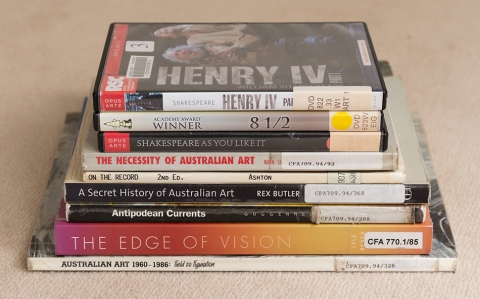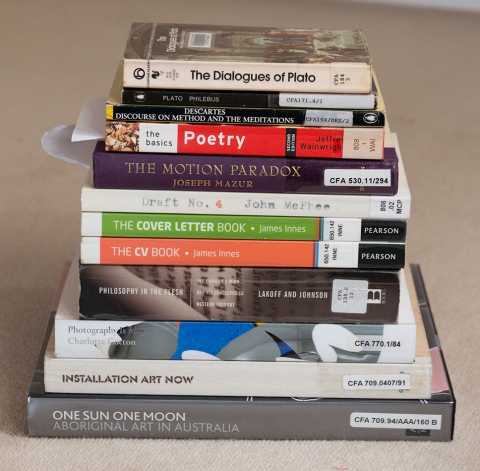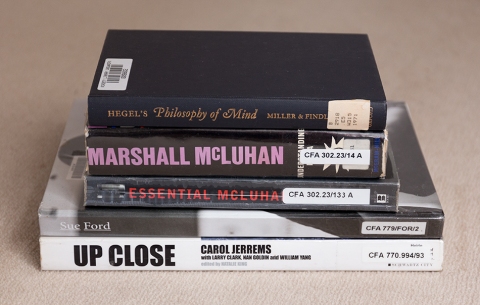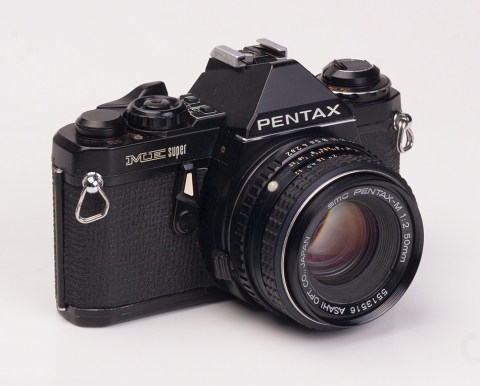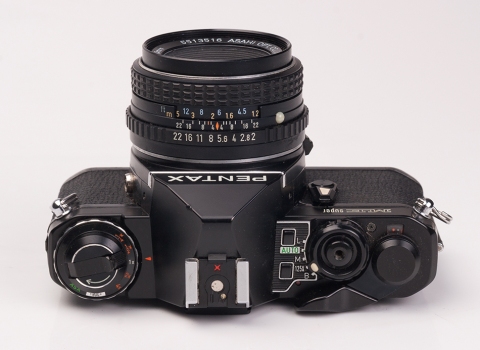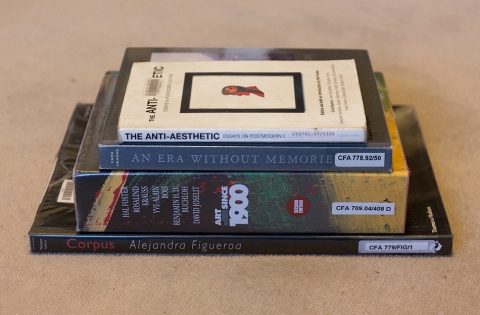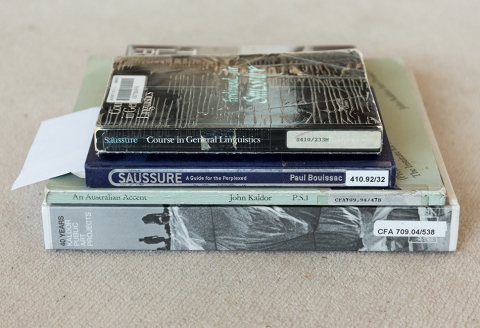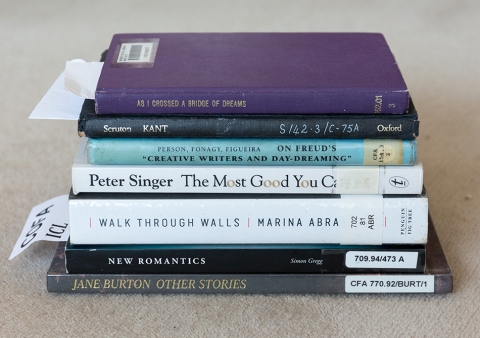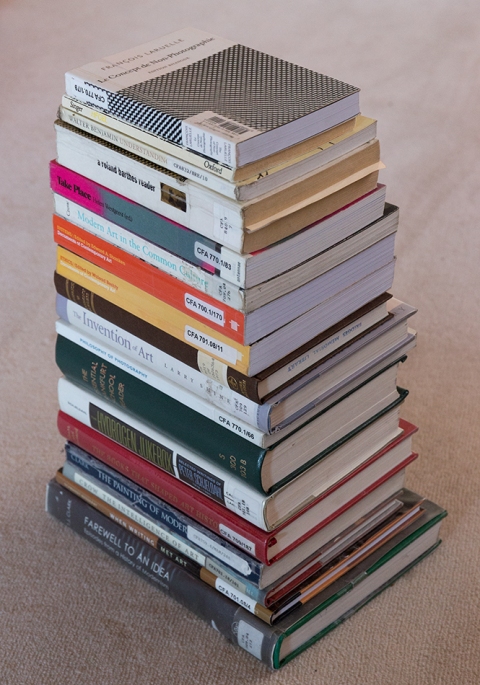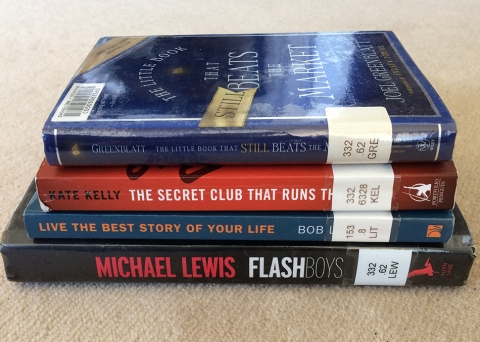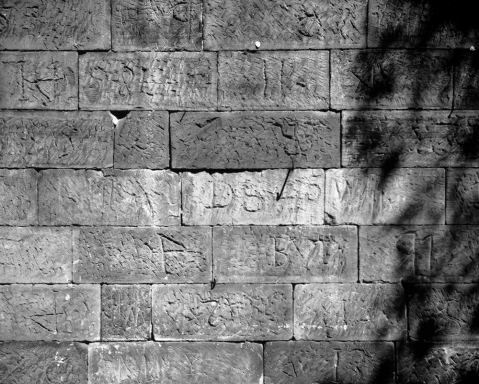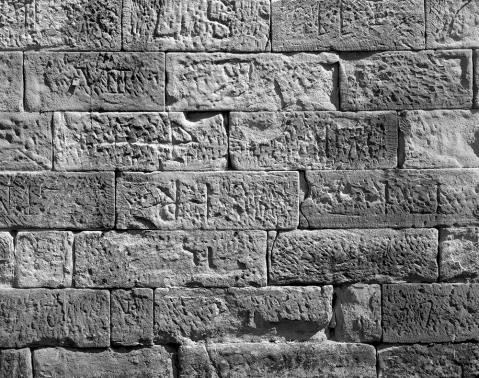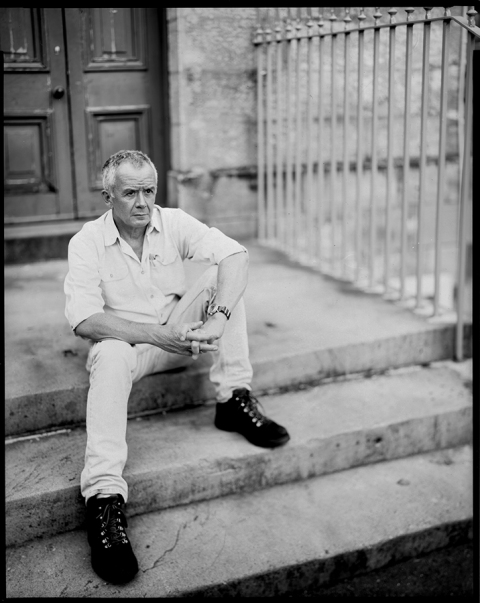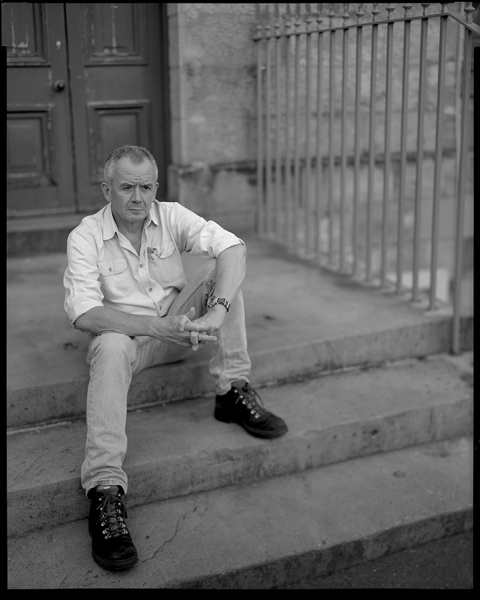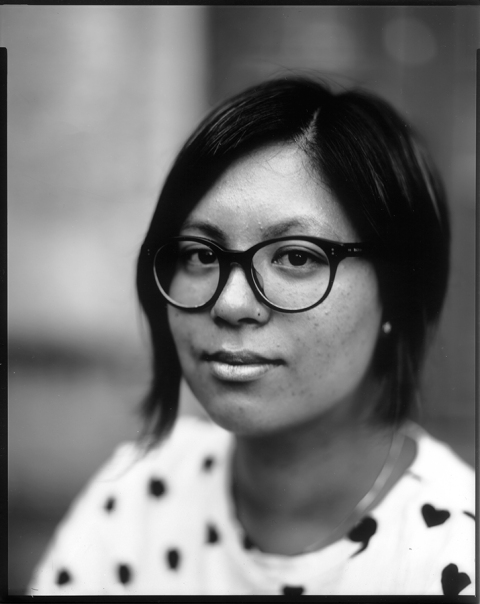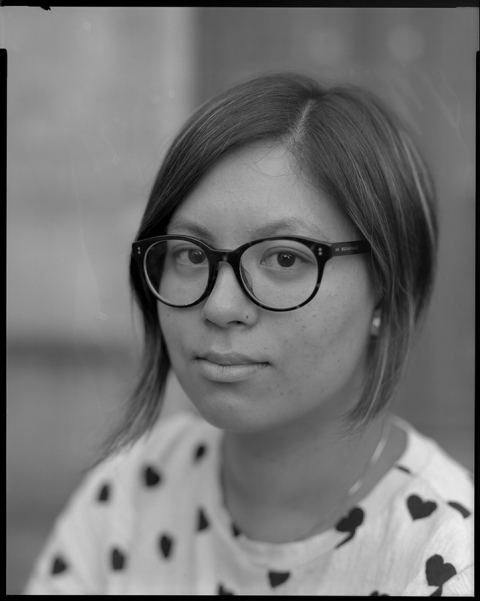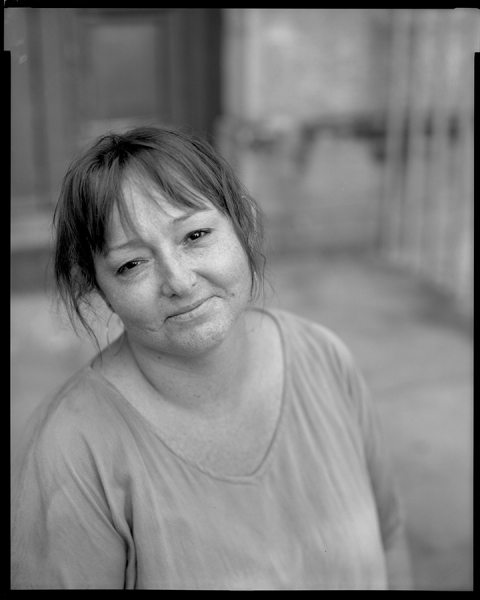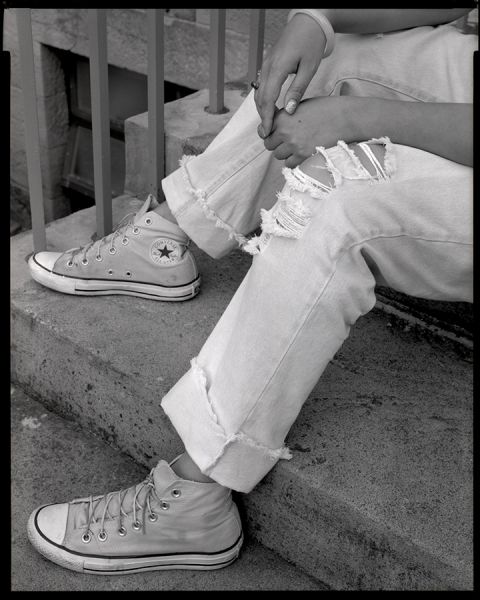Library books, October 2018
November 4, 2018
Library books, September 2018
November 4, 2018
Library books, August 2018
November 4, 2018
All my cameras, 15 – Pentax ME Super
August 12, 2018
This was the second camera I owned, after the piece of junk Praktica that I had as a teenager. I bought this in my twenties when I still knew nothing about photography. In those days (late 1980s in Sydney) there were lots of camera shops that had large selections of second hand cameras for sale, mostly on consignment I suppose. I got this on the recommendation of a salesman in the shop as I had no idea what was a good camera or not. I used this for about ten years as my only camera, including four years at art school. Then I started to get random light leaks in my photos and a camera repair place said it was a shutter problem that wasn’t worth repairing. So I set it aside and moved to a Canon EOS 5 film camera. I couldn’t sell the Pentax with that problem so just put it in a cupboard and forgot about it. I’m now thinking that I should test it with film and see what results I get, or perhaps show it to my current camera repair person for his opinion. If the body is no good I could sell the lens. Or I could buy another Pentax body, but I already have too many cameras. The rise of digital and online sales platforms meant that starting from about 2005 it was easy and relatively cheap to buy cameras that I could never afford in the old days, so I went from being someone who only ever owned one camera at a time to someone who had dozens.
The ME Super was an excellent camera, the only thing I didn’t like about it were the two small buttons that were used to change shutter speeds. I would much prefer a traditional dial, and always thought the buttons were a design gimmick flaw. Having said that, once I got used to them they were practical enough. The lens quality was also excellent. I shot a lot of slide film in those days and I’m still impressed by the image quality when I look through them.
Library books, March 2018
August 12, 2018
Library books, April 2018
August 12, 2018
Library books, July 2018
August 12, 2018
Library books, June 2018
August 12, 2018
Library books, May 2018
August 11, 2018
Large Format class, April 2018
April 15, 2018
Images and notes from the April 2018 Large Format class taught for ACP at the NAS facility, Taylor Square, Darlinghurst, Sydney. The class goes from 10am to 4pm and is designed as an introduction to 4×5 and 8×10 cameras for those who are curious about using sheet film and view cameras. We use both paper negatives and film during the class, the paper is easy to load and we can process it for a near instant look at the exposures. The film I process after class and load here for students to look at.
Above is a paper neg that was our first exposure during the initial practical exercise, which is learning to operate the 4×5 camera. The camera was a Chamonix 045N2 with a Fuji 135mm f/5.6 lens. We used Ilford Satin RC paper exposed as if it was ISO 3. The tonal rendering is pretty good for a paper neg although the scene didn’t have a wide range of colour or brightness. NAS is on the site of the 19th century Darlinghurst prison and the sandstone blocks that make up one wall have convict symbols carved in them – these were used to track that each prisoner was meeting their labour quota. The colour of the blocks are pretty much brown and yellow. Below is another section of the wall exposed with the same lens on Ilford HP5 film, processed in D76. The results are not directly comparable as the film photo was taken about one hour later and the sun was at a different angle, but I am impressed by the paper negative.
In the first part of the class we use the 4×5 camera to explore the basic principles of view camera photography, mostly doing architectural subjects but also pointing out how these are also mostly applicable to landscape photography. After lunch we look at the 8×10 camera in relation to portraiture, particularly covering technical considerations around close focusing and discussing how these principles also apply to still life. There is only so much you can cover in one day, we couldn’t practically do all four genres, but I think that by covering two of them in some depth the students should have an idea about how they could work in other scenarios.
The 8×10 camera is a wooden Deardorff dating from the mid 1960s and the lens we used was a 300mm f/5.6 Rodenstock Sironar N in a Copal 3 shutter. The students get to load the film into the film holders and to make the exposures, pulling the dark slide, cocking the shutter and deciding which moment to expose. Again we did both paper and film negatives and here they can be compared as they were exposed in the same light one after the other.
I like large format film for its lack of grain and smooth tonal transitions. The small depth of field that is possible is also interesting however I don’t like extremely small depth of field, particularly in portraits. With the 300mm lens doing fairly close focusing at f/5.6 as in the examples below, when the eyes were in focus other facial features were quite unsharp to an extent that was a bit odd looking. The results were more acceptable around f/11 so the film portraits were exposed at that aperture while the paper negatives were exposed at f/5.6 to avoid too slow a shutter speed, considering that the paper is rated at ISO 3 vs 400 for the film. So that depth of field difference can be observed here.
In regard to exposure these relative close ups also require us to think about the light fall off due to bellows extension factor. From memory the bellows were extended to about 450mm to obtain the close focus. I use the Reciprocity Timer app to calculate the correction required whereas in the old days I would work it out in my head based on a basic understanding of the inverse square law. In this case we metered the face with a Soligor spot meter, added one stop for bellows extension and one stop to lift the skin tone one stop above a mid tone.
With the photo below we decided to maximise depth of field and closed the aperture to f/64 and the exposure time was 2 seconds. It is not equally sharp from front to back but clearly more depth of sharpness than in the portraits.
